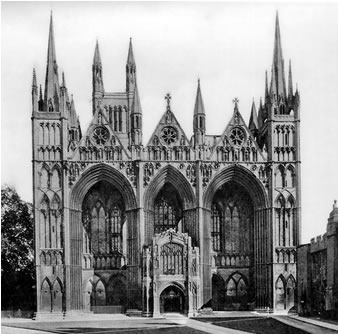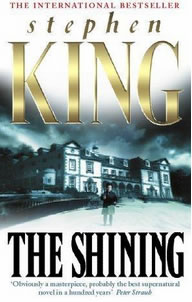Spawning from the 1970s through to 2014, Ann Rice’s The Vampire Chronicles are worth briefly noting. These novels are far-removed from the “traditional” vampire which was portrayed as pure evil. Introspective, guilt-ridden and charismatic, the vampire couple Lois and Lestat paved the way for the brooding, romantic vampire found in popular culture such as Buffy the Vampire Slayer, True Blood and Twilight. Rice’s series was vital in reigniting interest in the vampire figure and introduced the Gothic to a new audience.
I still prefer a good ole vampire villain, but I guess a healthy dose of “badass” will do (I’m looking at you, Eric Northman and Spike!).
Finally, I will end my discussion with the 2000 mammoth novel, House of Leaves. I won’t go into much detail with this as it is featured on my ‘Top 5 Gothic Novels’ blog and my review of it is available to read here. I will say, though, that it breathes new life into the haunted house tale, both with its narrative and typographical structure. Darkness and uncertainty pervades this tale, and whilst the author can’t be trusted on everything, Danielewski’s own words that this is a “supreme Gothic tale” certainly rings true.
I hope that this post serves as a useful introduction to the Gothic, but just in case you’re still a bit iffy, here are some of the characteristics that you can look out for:
- A dark and suspenseful atmosphere
- Gloom and horror
- Mysterious and often unexplained events
- All or part of the story takes place in a large, isolated house, castle or hotel
- An ancient prophecy or family curse (although this is more traditional as opposed to modern)
- Omens, portents or visions
- Religion
- Psychological trauma
- A return of the repressed (historical events or repressed emotions or issues)
To complicate things further, there are various sub-categories of the Gothic: American Gothic, Southern Gothic (a sub sub-genre?!), Female Gothic, Traditional Gothic, Modern Gothic, Postmodern Gothic…. A blog for another time, perhaps?
**As my blog only took us up to the year 2000, check out these 21st century Gothic novels:
Ali Smith’s Hotel World (2002), The Moth Diaries (2002), White is for Witching (2009), Lauren Kate’s Fallen (2009), The Southern Vampire Mysteries (2001- 2011), as well as Stephenie Meyer’s Twilight and Ann Rice’s The Vampire Chronicles, which I’ve already briefly mentioned.




